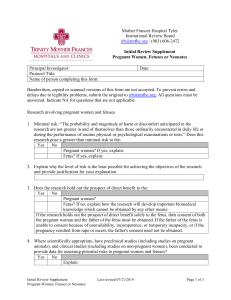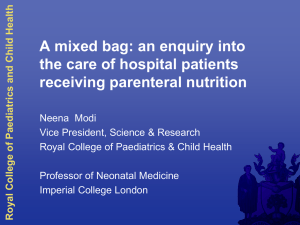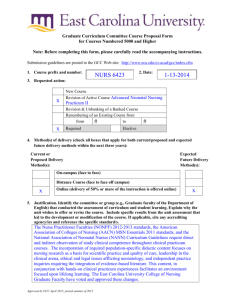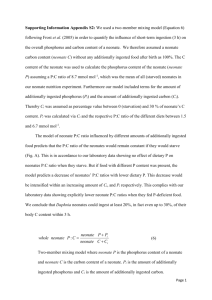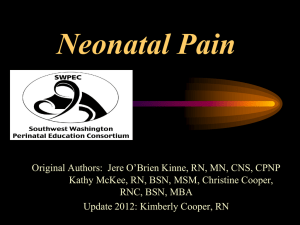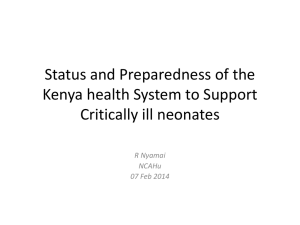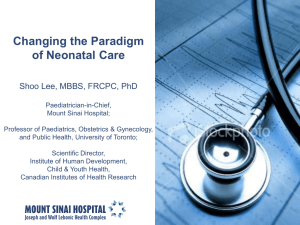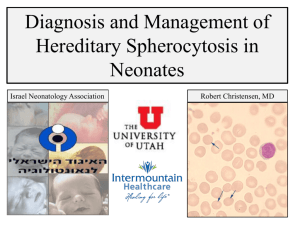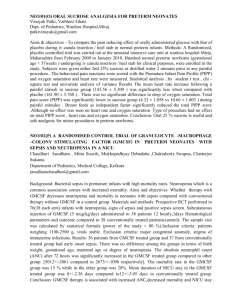Question Bank
advertisement
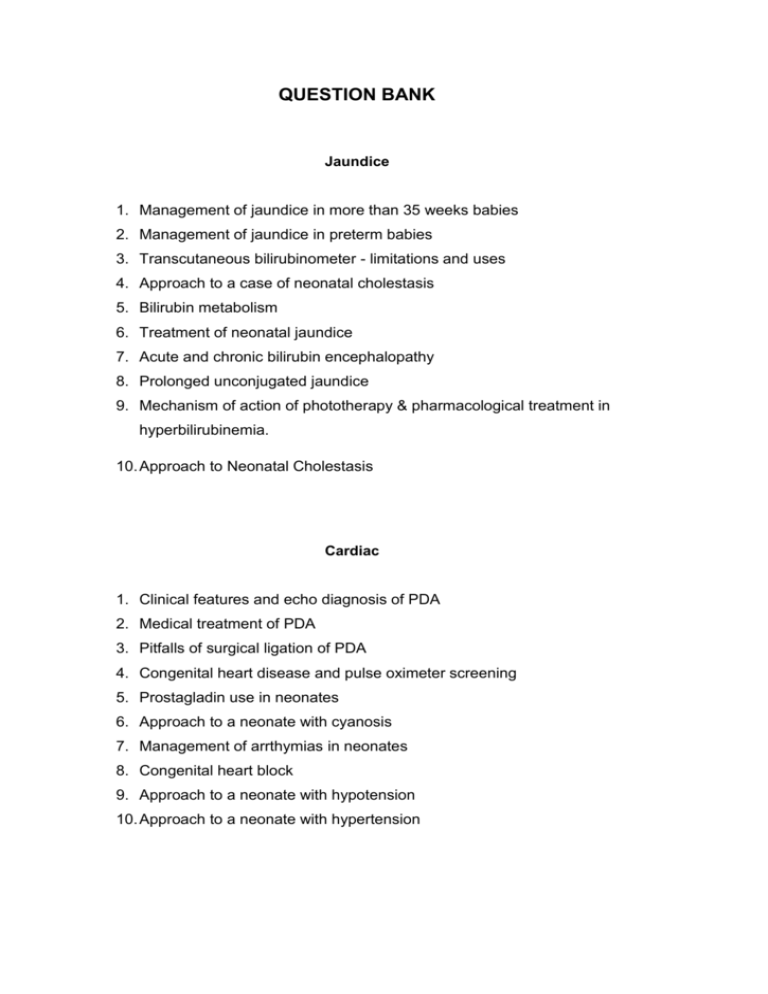
QUESTION BANK Jaundice 1. Management of jaundice in more than 35 weeks babies 2. Management of jaundice in preterm babies 3. Transcutaneous bilirubinometer - limitations and uses 4. Approach to a case of neonatal cholestasis 5. Bilirubin metabolism 6. Treatment of neonatal jaundice 7. Acute and chronic bilirubin encephalopathy 8. Prolonged unconjugated jaundice 9. Mechanism of action of phototherapy & pharmacological treatment in hyperbilirubinemia. 10. Approach to Neonatal Cholestasis Cardiac 1. Clinical features and echo diagnosis of PDA 2. Medical treatment of PDA 3. Pitfalls of surgical ligation of PDA 4. Congenital heart disease and pulse oximeter screening 5. Prostagladin use in neonates 6. Approach to a neonate with cyanosis 7. Management of arrthymias in neonates 8. Congenital heart block 9. Approach to a neonate with hypotension 10. Approach to a neonate with hypertension Respiratory system 1. Define Respiratory distress, clinical scoring systems and Respiratory failure 2. Differential diagnosis of Respiratory distress in term newborn 3. Differential diagnosis of Respiratory distress in preterm newborn 4. Pathophysiology and diagnosis of TTNB 5. Respiratory Distress Syndrome, clinical features, diagnosis and management strategies 6. Meconium Aspiration Syndrome 7. Air leak Syndromes, etiology, diagnosis and management 8. Non invasive ventilation in neonates 9. Apnea of Prematurity 10. Prevention of RDS 11. Management of child with difficult airway 12. Chronic lung disease - pathophysiology, prevention, treatment 13. Noninvasive respiratory system monitoring in neonates 14. Risk factors, common organisms and treatment of congenital pneumonia. 15. PPHN diagnosis and principles of management 16. Surgical disorders – a. Oesophageal atresia b. Congenital diaphragmatic hernia c. Congenital Cystic adenomatoid malformation and other lung lesions 17. CPAP . a. Physiology and mechanism of action b. Indications c. Methods and CPAP devices d. Evidence of its Use e. Success and Failure f. Complications g. Nursing care 18. Mechanical Ventilations a. Indications b. Initiation of Ventilation c. Ventilation strategies of RDS, MAS and Asphyxia d. Weaning and Extubation e. Complications related to ventilation including BPD, Ventilator associated Peumonia f. Approach to a neonate with sudden desaturations on ventilator g. Common modes of Pressure controlled Ventilation – IMV, SIMV, AC, PSV h. Nursing care of a neonate on ventilator i. Lung protective strategies j. High frequency ventilation k. Permissive hypercapnia l. Nitric oxide m. Volume ventilation n. Interpretation of ABG 19. Exogenous Surfactant Therapy a. Indications b. Physiological Benefits c. Timing Dosage and Method of administration of different surfactant d. Composition e. Newer surfactants f. Non RDS uses of surfactant Central Nervous System 1. Neonatal Seizures – Etiologies and management 2. Differential diagnosis of Neonatal Encephalopathy 3. Hypoxic Ischemic encephalopathy a. Intrauterine assessment b. Risk factors c. Mechanisms of Injury d. Major neuropathological varieties e. Clinical features, Diagnosis and Staging f. Role of Neuroimaging g. Prognostic factors h. Principles of management 4. Intraventricular Hemorrhage in Preterm a. Risk factors b. Mechanisms of Injury c. Diagnosis and Grading d. Role of Neuroimaging e. Prognostic factors f. Principles of management g. Preventive Strategies h. Posthemorrhagic Hydrocephalus 5. Periventricular Leukomalacia a. Mechanism of brain Injury b. Neuropathological correlates c. Long term outcome 6. Intracranial Hemorrhage in Term infants 7. Prevention and Management of Hypoglycemic brain injury 8. Bilirubin induced brain injury, its mechanism, clinical features and prevention 9. Differential diagnosis and evaluation of Floppy neonate 10. Etiology, diagnosis and treatment of Meningitis 11. Short notes on CNS Malformations a. Encephalocele b. Neural tube defects c. Holoprosencephaly d. Schizencephaly e. Lissencephaly f. Congenital Hydrocephalus 12. Importance and indication of BERA and OEA in Neonates 13. Room air versus 100% oxygen resuscitation 14. Neuroprotective strategies for preterm brain 15. Neuroimaging in NICU 16. Importance of nutrition for neonatal brain 17. Caffeine and neurodevelopment outcome 18. Developmentally supportive care 19. Designing a follow up program for NICU 20. Neurodevelopmental follow up 21. Counseling parents on long term neurodevelopmental outcome Gastroenterology and nutrition 1. Necrotizing enterocolitis a. Clinical features and diagnosis of NEC b. Probiotics in NEC c. NEC in term babies d. Feeding practices in NEC e. Transfusion associated NEC f. Intestinal microcirculation and NEC g. Neurodevelopmental outcome of NEC in preterm infants h. Surgical mangement of NEC 2. Gastroesophageal reflux a. Diagnosis and management of GER in infants b. GER and apnea - relation 3. Management of Feeding intolerance in preterms 4. Gastrointestinal surgical emergencies in neonates 5. Medical management of Tracheo esophageal fistula 6. Disorders of umbilicus 7. Approach to a child with bilious vomiting 8. Approach to a neonate with abdominal distension 9. Nutrition a. Enteral nutrition in preterms b. Total parenteral nutrition c. Early aggressive nutrition in neonates d. Post discharge nutrition in NICU e. Barkers hypothesis f. Non nutritive sucking g. Donor human milk h. Bovine milk for human nutrition i. Human milk fortifier j. Growth Charts and Growth monitoring k. Feeding of babies with abnormal doppler l. Metabolic Bone Disease m. Protein needs of the preterm babies n. Anorectal malformations Obstetrics and Perinatology 1. Preterm labour and its management 2. Infant of diabetic mother 3. Pregnancy induced hypertension 4. Assisted reproductive technology and neonatal outcome 5. Doppler indices and its relevance for neonatal management 6. Assessment of fetal well being and Intrapartum management 7. Examination of placenta and umbilical cord 8. Maternal nutrition and its impact on fetal outcome 9. Obstetrical analgesia and Neonatal outcome 10. Delayed cord clamping 11. Cord blood gas analysis for prediction of outcome. 12. Evidence based antenatal interventions for decreasing perinatal mortality. 13. Antenatal and immediate postnatal management of Rh isoimmunisation 14. Significance of soft markers on level II scan. 15. Antenatal steroids – (i) evidence (ii) controversies. 16. Congenital CMV infection. 17. Usefulness of APGAR score in current day neonatology 18. Approach to neonate born to a mother with HIV Preventive and Community Neonatology 1. What is the new-born component of NRHM. Discuss the strengths and weaknesses of this programme. 2. Describe the burden of low birth weight neonates in India and national strategies to improve their outcome. 3. Describe the rationale, scope of interventions and the strategy for implementation of the Janani Shishu Suraksha Karyakram (JSSK). 4. Describe the rationale, components and monitoring strategies for home based neonatal care programme. 5. A district hospital has an annual delivery rate of 8000. Describe the setting up of a special care new-born unit at this facility. 6. Describe the configuration and services of a New-born Stabilisation Unit. 7. Current Perinatal & Neonatal Mortality Rates in our country. Identify the existing challenges faced in their reduction and evidence based strategies to reduce the same. 8. Describe research priorities for reducing perinatal and neonatal morbidity and mortality in India. 9. Describe strategies for prevention of intravascular catheter related infections. 10. Discuss strategies to prevent hospital acquired infections. 11. Evidence based strategies for prevention of mother to child transmission of HIV. 12. Describe components of a comprehensive new-born screening programme and status of newborn screening in India. Metabolic 1. Neonatal metabolic screening 2. Congenital adrenal hyperplasia 3. Screenig stratergies and managment of congenital hypothyroidism 4. Approach to a diagnosis of IEM 5. Emergency managment of a neonate with suspected IEM 6. Neurological disorders presenting as IEM 7. Define Hypoglycemia in newborn. Discuss Cornblath threshlold for management of hypoglycemia in newborn? 8. Describe stepwise treatment if hypoglycemia in a newborn? 9. Electrolyte imbalance - hypo and hypernatremia, kalemia, calcemia and magnesiumia 10. What are the causes of hyperglycemia? How will you manage a case of hyperglycemia 11. What is persistent hypoglycemia? Describe management of persistent hyperinsulinimic hypoglycemia 12. Describe urea cycle disorders and discuss the management of severe hyperammonemia? Fluid, Electrolytes, Acid Base disorders in newborns 1. What are the principles of Fluid & Electrolyte therapy in neonates? 2. Write short notes on a. Insensible water loss in neonates & its clinical significance b. Goals of Fluid & Electrolyte therapy in neonates c. Monitoring of Fluid & Electrolyte therapy 3. Discuss principles of Fluid & Electrolyte therapy in following conditions a. Perinatal asphyxia b. PDA c. Diarrhea & dehydration d. Severe CLD e. TTNB 4. Etiology and management of metabolic acidosis with increased anion gap. Renal 1. Acute and chronic renal failure in neonates 2. Approach to a child with antenatal hydronephrosis 3. Posterior urethral valve Hematological 1. Approach to a neonate with early and late anemia 2. Approach to a neonate with thrombocytopenia 3. Approach to a neonate with bleeding 4. Rh Isoimmunization 5. Hemorrahgic disease of the newborn Infections 1. Diagnostic tests for neonatal sepsis 2. Rational antimicrobial therapy 3. Adjunct therapy for neonatal sepsis 4. Intrauterine infections 5. Disinfection routine in NICU 6. Approach to a neonate born to a mother with TB and mother with HIV. 7. Fungal infections in neonates including flucanazole prophylaxis 8. Antifungal therapy in neonates Miscellaneous 1. Pain management in NICU 2. Approach to a neonate with conjunctivitis 3. New NRP guidelines 4. Informed consent 5. Managing a death in NICU 6. Lactation failure 7. Exchange transfusion 8. Methods of gestational age assessment 9. Thermoregulation in neonates 10. Immunization in preterm infants 11. Kangroo mother care 12. Birth injuries and birth trauma 13. Developmental dysplasia of hip 14. Approach to a neonate with fetal hydrops 15. Fever in a neonate 16. Disorders of umbilicus in neonates 17. Plagiocephaly 18. Hearing assessment in neonates 19. Visual follow up of NICU graduates including ROP 20. IUGR neonates - immediate and late problems 21. Twin pregnancy 22. Undescended testes 23. Optimum timing of cord clamping 24. Role of Postnatal steroids in Neonatology
